Charley Horse Remedies: 12 Natural Ways To Stop Leg Cramps
Get rid of cramps with a few simple natural remedies available in your kitchen.

Image: Shutterstock
Nobody knows why charley horse is a term for leg cramps. Some claim that this ailment was named after Charley Radbourne, who was nicknamed Old Hoss, a baseball pitcher who experienced it during a game in the 1980s. Charley horse refers to regular cramps in the muscles of the legs and calves that develop as a result of a trigger. The triggers themselves can be of varying nature. If you want to know how to get rid of a charley horse with natural solutions, continue reading as we delve deeper into the medical condition and its remedies in this post.

In This Article
What Is A Charley Horse?
Charley horse is just another for a muscle spasm that is marked by uncomfortable muscle contractions. It mostly occurs in the legs. Charley horses are mostly spasmsi A sudden involuntary muscle contraction. in the calf muscles that occur particularly at night. When these muscle spasms do not stop for many seconds, it may result in severe pain. The good news is, there are many home remedies for muscle weakness which can help prevent this condition. Charley horse is identified by the onset of the following symptoms.
This condition is identified by the onset of the following symptoms.
 Quick Tip
Quick TipKey Takeaways
- Charley horses are painful spasms that occur in calf muscles at night due to muscle injury, mineral deficiency, over-exercising, or poor blood flow.
- Home remedies such as hot or cold compress, massage with coconut and lavender essential oil or turmeric with coconut oil can help provide pain relief.
- Stretching, massaging your leg, or putting weight on the affected leg can help increase the blood flow and relieve the pain.
- The consumption of pickle juice, honey, and cinnamon, plenty of water, as well as stretching before bedtime are some ways to prevent it.
Signs And Symptoms Of Charley Horses
The most common symptoms are (1):
- Your muscles may tighten and hurt.
- The muscles may begin contracting, resulting in uncontrollable muscle spasms.
- Although these spasms are often brief, they may sometimes last for several minutes.
- Prolonged spasms can cause intense pain and discomfort.
If you notice any of these symptoms, you may visit your doctor for a diagnosis. The diagnosis involves the discussion of your symptoms and medical history, followed by a physical examination. The doctor may also recommend blood tests or MRI exams if they suspect any underlying condition.
Charley horses can be brief or last for several minutes, but no more than 10 minutes in most individuals. This condition is mostly infrequent, but frequent spasms might hint at an underlying health issue. A few factors that can be held responsible for causing a charley horse are discussed below.
What Causes A Charley Horse?
The most common causes of a charley horse are (1):
- Inadequate or poor blood flow to the muscles
- Muscle injuries
- Exercising in an extremely hot or cold environment
- Overuse of specific muscles
- Stress, especially in the neck muscles
- Not warming up before exercises
- A compressed nerve in the spine
- Consumption of diuretics, which may lead to poor potassium levels
- Deficiency of minerals like sodium, potassium, and calcium in the blood
- Altered pH concentration in the blood
- Dehydration
While these were the general causes of this condition, various other factors may also cause leg cramps at night. For instance, diseases like diabetes, sclerosis, and cirrhosis may also cause leg cramps (1). In this case, it is advisable to seek medical help.
You may also experience nighttime leg cramps, also known as nocturnal leg cramps (NLCs), which can be a troublesome experience, and more so for those over the age of 60. While the exact cause remains unclear, several factors may contribute to these cramps.
Prolonged standing or physically demanding activities during the day could be a trigger. Certain underlying medical conditions like electrolyte imbalances, neurological disorders, hormonal or metabolic issues, and nerve or arterial compressions may also cause these cramps. Additionally, these cramps might also be associated with other health conditions like heart failure, nocturnal apnea, and depression (1).
A few factors can put you at a higher risk of developing a charley horse. They are discussed below.
Risk Factors For Charley Horse
- Activities that involve sports or athletics
- Age – Infants and older adults are at a higher risk.
- Obesity
- Medication like diuretics or statins
- Smoking tobacco
Before moving on to the natural remedies that can help in the treatment of a charley horse, here are some basic tips you can follow to obtain relief right after you experience a leg cramp.
What To Do When You Get A Leg Cramp
When you experience a leg cramp, the following actions may provide immediate relief:
- Stretch the cramped leg and massage it gently. You can try foam rolling to ease the pain.
- If you have a calf cramp, put your weight on the affected leg and bend your knee slightly.
- If you can’t stand, sit on a chair or floor and stretch your leg.
- Follow with the application of a heat or cold compress on the cramped muscles.
Although these steps may provide relief, they are not permanent cures. Hence, you can give any one or a combination of the following remedies a shot for combating charley horse successfully.
How To Get Rid Of A Charley Horse Naturally
- Foot Massage
- Pickle Juice
- Epsom Salt Bath
- Vitamins
- Essential Oil
- Bar Of Soap
- Heat Or Ice
- Apple Cider Vinegar
- Turmeric
- Cinnamon
- Honey
- Baking Soda
Home Remedies To Stop Charley Horse
Wondering how to get rid of Charley Horse? These home remedies can help you out.
1. Foot Massage

You Will Need
Coconut or olive oil (optional)
What You Have To Do
- Stretch your affected leg to its maximum.
- Flex your foot towards your knee.
- You can also grab your toes and gently flex them towards your knee.
- Massage the affected muscles on the stretched leg with or without the oil.
- Take a warm bath.
How Often You Should Do This
Do this whenever you experience leg cramps.
Why This Works
Stretching and massaging the cramped muscles can help relax them. This also enhances blood flow to the affected region and offers quick relief from a Charley Horse (2).
2. Pickle Juice
You Will Need
2-3 ounces of pickle juice
What You Have To Do
Consume pickle juice.
How Often You Should Do This
You must do this until the symptoms disappear completely.
Why This Works
Pickle juice is packed with minerals like potassium, sodium, magnesium, and calcium. Leg cramps can be caused due to a deficiency in these electrolytesi Key minerals in the blood that regulate muscle and nerve functions and hydrate the body. , and intake of pickle juice helps in restoring their levels. A study published in the Medicine and Science in Sports and Exercise journal tested whether pickle juice can relieve muscle cramps in dehydrated males. Researchers induced cramps in a small foot muscle using electrical stimulation and, after a 30-minute break, triggered another cramp while participants drank either pickle juice or deionized water. They found that pickle juice significantly reduced cramp duration by about 49 seconds compared to deionized water. However, it also suggests that pickle juice relieves cramps not by replenishing fluids or electrolytes but through a neural reflex triggered in the mouth and throat, which helps stop muscle cramping more quickly (3). It’s important to note that this study has its limitations and further research is needed to fully understand the effects of pickle juice on muscle cramps.
3. Epsom Salt Bath
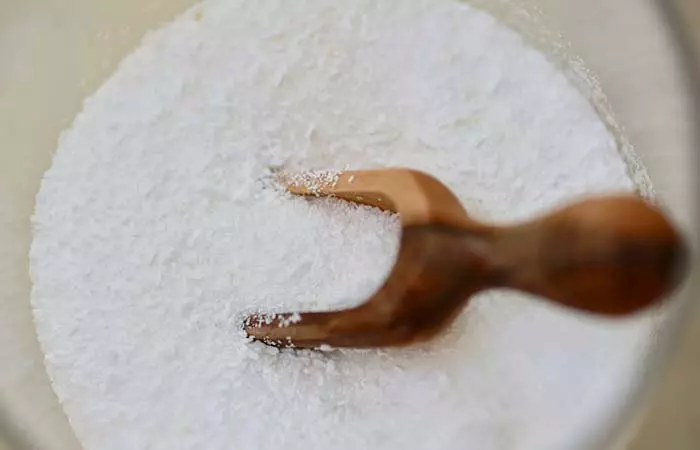
You Will Need
- 1 cup of Epsom salt
- Water
What You Have To Do
- Add a cup of Epsom salt to a tub of water.
- Soak in this for about 15 to 20 minutes.
How Often You Should Do This
Do this once daily or every alternate day.
Why This Works
As you are aware, magnesium deficiency is responsible for recurring Charley horses (1). Soaking in an Epsom salt bath replenishes the magnesium levels in your body, which, in turn, reduces the inflammation and pain associated with leg cramps and promotes muscle relaxation (4). It is a natural muscle relaxer, and it will make you feel much better.
4. Vitamins
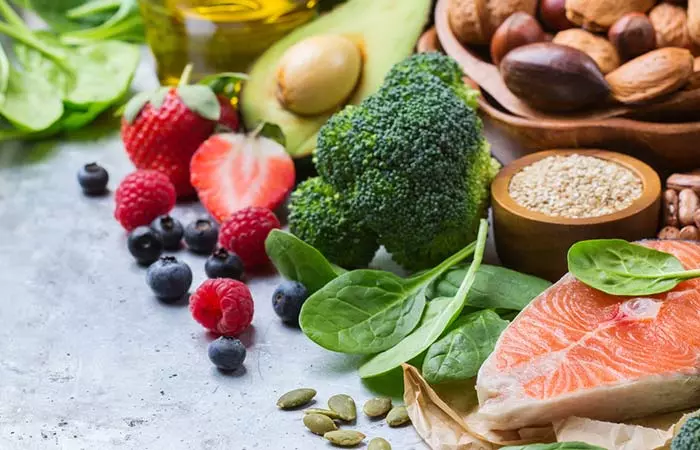
Your body requires proper nutrition to function properly. Vitamins B complex and D are believed to work wonders for muscle cramps. In fact, a study has concluded that intake of B complex vitamin reduced muscle cramps in about 86% of the patients (5). Low vitamin D levels in your blood are linked to poor muscle strength, balance issues, and muscle pain (6). So, they may also trigger muscle cramps.
Thus, it is important to consume foods rich in these vitamins like meat, eggs, dairy products, whole grains, and green leafy veggies.
5. Lavender Oil

You Will Need
- 6 drops of lavender oil
- 1 teaspoon of coconut oil
What You Have To Do
- Mix six drops of lavender oil with a teaspoon of coconut oil.
- Apply it to the cramped muscles and massage gently.
How Often You Should Do This
You must do this right after you experience a leg cramp.
Why This Works
The very aroma of lavender calms you down and soothes your anxiety (7). This, in turn, helps in relaxing your muscles. Also, the anti-inflammatory and analgesic activities of lavender oil help relieve inflammation, swelling, and pain in the affected area (8).
6. A Bar Of Soap
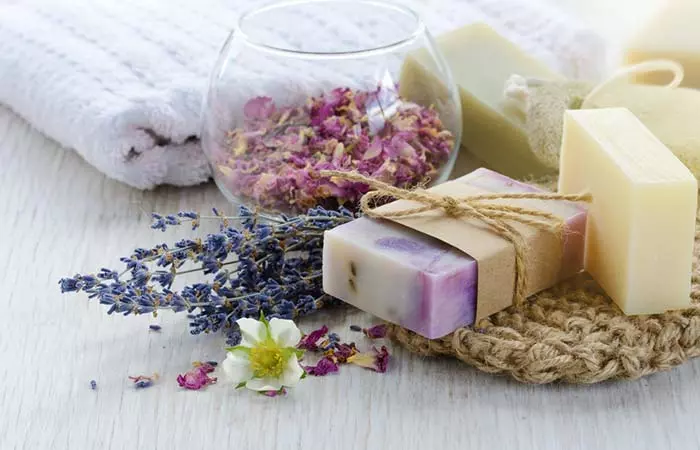
You Will Need
A small bar of soap
What You Have To Do
- Before going to sleep, slip a small bar of soap under the covers, preferably near your feet.
- Take the soap out the following morning.
How Often You Should Do This
You must do this every night.
Why This Works
Although there is no scientific evidence for this remedy, many individuals affected by charley horse or leg cramps swear by this. It is believed that placing a bar of soap underneath your sheets, near your feet, can provide relief from charley horses in due course of time.
7. Heat Or Ice

You Will Need
A hot or cold pack
What You Have To Do
- Stretch the affected leg.
- Apply a hot or cold pack to the cramped muscles.
- Leave it on for 2 to 3 minutes and then remove it.
- Repeat thrice.
How Often You Should Do This
You should do this whenever you are affected by a charley horse.
Why This Works
A hot pack increases blood circulation to the affected area, providing immediate relief from cramps. Whereas, a cold pack can numb the pain and reduce swelling (if any) (9).
8. Apple Cider Vinegar
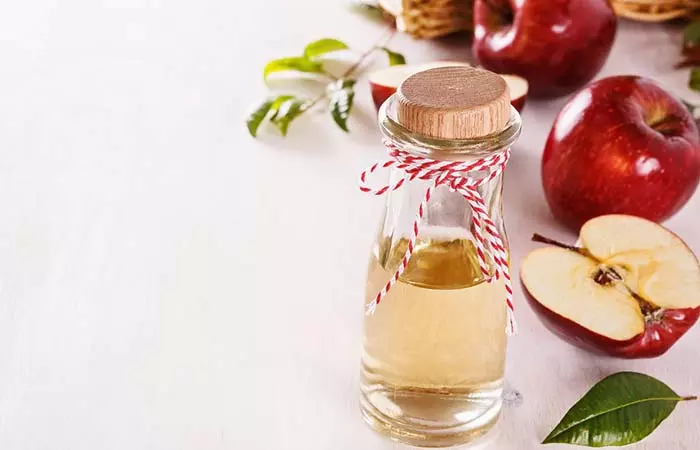
You Will Need
- 2 teaspoons of apple cider vinegar
- 1 teaspoon of honey
- 1 glass of warm water
What You Have To Do
- Add two teaspoons of apple cider vinegar and a teaspoon of honey to a glass of warm water.
- Mix well and consume.
How Often You Should Do This
You must do this once daily.
Why This Works
Apple cider vinegar is packed with nutrients like calcium, potassium, and magnesium (10). Since leg cramps are often caused due to mineral deficiency, restoring the lost minerals by consuming ACV may offer relief from this condition (11). However, it is important to note that this remedy is anecdotal, as there are no direct studies that confirm ACV can effectively treat muscle cramps.
9. Turmeric
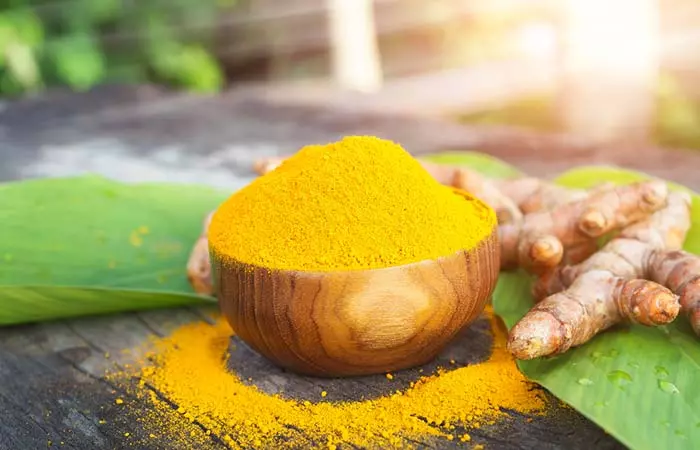
You Will Need
- 1 tablespoon of turmeric powder
- Coconut oil (as required)
What You Have To Do
- Take a tablespoon of turmeric powder and add a little coconut oil to it.
- Apply the turmeric-coconut oil paste to the affected muscles and massage gently.
- Leave it on for about 30 minutes before washing it off.
- You can also mix a teaspoon of turmeric powder in a glass of hot milk and consume daily.
How Often You Should Do This
Do this whenever the leg cramp strikes for immediate relief.
Why This Works
Turmeric contains curcumini A yellow chemical present in turmeric that works as an anti-inflammatory compound. , which is an anti-inflammatory compound. The topical application, as well as consumption, of turmeric may help reduce the inflammation, pain, and swelling associated with a charley horse (12).
10. Cinnamon
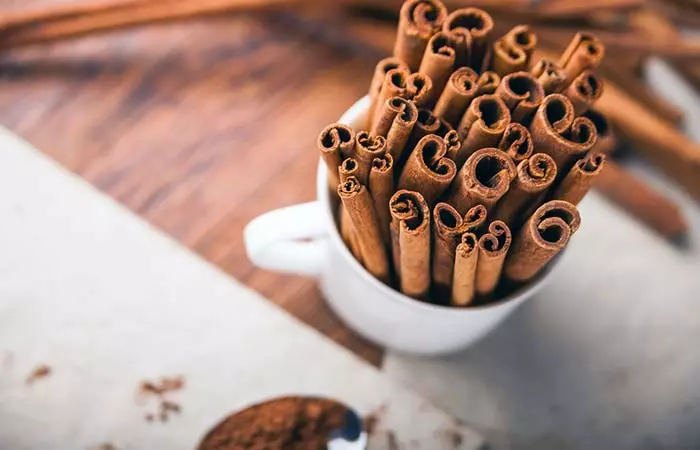
You Will Need
- 1 teaspoon of cinnamon powder
- 1 teaspoon of honey
- ½ cup of warm water
What You Have To Do
- Mix a teaspoon each of cinnamon powder and honey in a glass of warm water.
- Consume this concoction.
How Often You Should Do This
Consume this mixture twice daily, preferably every morning and evening.
Why This Works
Cinnamon is a multifaceted medicinal plant with a wide range of benefits. Given its anti-inflammatory properties, it is no surprise that cinnamon may work well in relieving muscle soreness and swelling linked to leg cramps (13).
11. Honey
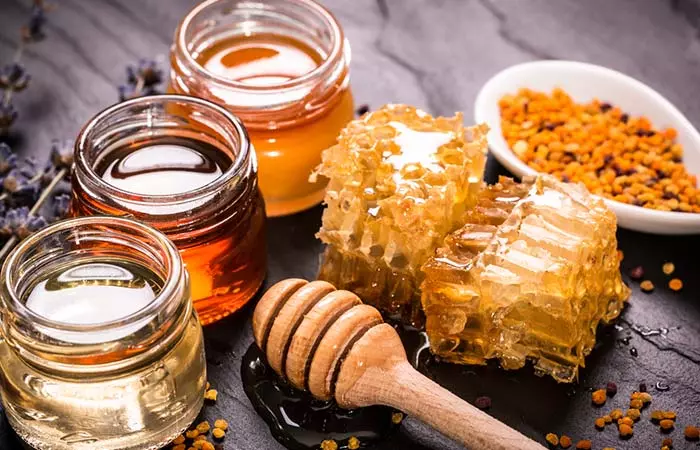
You Will Need
2 teaspoons of honey
What You Have To Do
- Consume two teaspoons of honey daily.
- You can also mix honey with sunflower seeds or apple cider vinegar for additional benefits.
How Often You Should Do This
You must do this once daily.
Why This Works
Honey has powerful anti-inflammatory and analgesic properties (14). Due to this, it may help soothe the inflammation and pain that accompany leg cramps.
12. Baking Soda

You Will Need
- ¼ teaspoon of baking soda
- 1 glass of water
What You Have To Do
- Add one-fourth teaspoon of baking soda to a glass of water.
- Mix well and consume immediately.
How Often You Should Do This
You must drink this right after you get a leg cramp.
Why This Works
Sodium deficiency can also be a possible trigger of your leg cramps. If you are into strenuous exercises, sweating and loss of sodium are common, leading to exertion and fatigue. It may also result in leg cramps. The intake of baking soda restores the lost sodium in your body and may help you get rid of a charley horse (15).
The effect of sodium on muscle cramps can also be observed in a case study of a 17-year-old high school football player with cystic fibrosis, a genetic condition that causes salty sweats. The case study was published in the Cureus Journal of Medical Science. Here is what you need to know about it:
- The boy experienced severe muscle cramps during games due to excessive salt loss in sweat. Two years before seeking help from the sports medicine clinic, he also had a seizure due to dangerously low sodium levels.
- Despite switching to sports drinks and salt tablets, he continued to struggle with cramps and was unable to finish games.
- After consulting a doctor, he was given a strict hydration and electrolyte plan. The plan included tracking his weight before and after practices to monitor fluid loss and drinking an electrolyte solution during games.
- He also took large salt tablets before and during games and was also advised to eat salty meals like ramen after games to restore lost sodium.
- With this regimen, he had only two minor episodes of calf cramping but was able to continue playing (16).
Research also found that an 8.4% sodium bicarbonate solution may help increase sodium levels. It is highly concentrated, making it a hypertonic solution, which is much denser than normal body fluids. When administered, it draws water from the body’s cells into the bloodstream, helping to raise sodium levels in cases where they are too low (17).
However, it is important to note that dehydration and electrolyte loss may always be the reason behind muscle cramps. This can be observed in a study published in the Journal of Athletic Training. It tested the effect of an electrolyte beverage with sodium chloride on muscle cramps during exercise. Results showed that while the drink helped delay cramps, 69% of participants still experienced them. So, apart from sodium and other electrolytes, muscle fatigue may also play a significant role in cramps (18). This makes it necessary for you to consult your doctor before using baking soda as a remedy for leg cramps.
These are all the remedies you can follow the next time you wonder how to get rid of a charley horse. Along with them, you should also maintain a healthy lifestyle by following a balanced diet, working out regularly, and keeping yourself hydrated. Sometimes, the issue may persist despite taking these measures. Learn when to see a doctor below.
When To Seek Medical Help?
It is recommended to visit a doctor if you experience the following:
- Severe pain
- Swelling
- Skin discoloration
- More frequent cramps
- Cramps that keep you from getting enough sleep
- Muscle cramps in other parts of the body
You may also try physical therapy, acupuncture, or chiropractic care but before that, you must also make some changes to your diet to combat recurrent leg cramps. Following the diet tips that are given below can help you recover faster from a charley horse.
Diet Tips
Foods that can help you fight charley horses are:
- Sodium-rich foods like cheese, beetroot, celery, carrots, meat, and fish.
- Potassium-rich foods like melons, citrus fruits, bananas, avocados, and dairy.
- Foods containing calcium like sardines, salmons, leafy vegetables, nuts, and tofu.
- Magnesium-containing foods like legumes, soybeans, pumpkin seeds, cocoa, dark chocolate, dried fruits, and yogurt.
Since deficiency in minerals is one of the leading causes of charley horses or leg cramps, following these diet tips ought to help (1).
There are also a few additional tips you must incorporate into your daily life to prevent the recurrence of this condition.
Prevention Tips For Leg Cramps
- Stretch before and after doing intense exercises.
- Do not strain the same muscles on consecutive days while exercising.
- Do not exercise in severe weather conditions.
- Keep your hydration levels up by drinking enough water throughout the day.
- Drink electrolyte-rich sports drinks like Gatorade.
- Do flexibility stretches before bedtime.
- Indulge in yoga exercises that require stretching like the Cobbler Pose, Stick Pose, Palm Tree Pose, etc.
- Quit smoking.
- Avoid consuming caffeinated drinks and drugs.
 Quick Tip
Quick TipInfographic: 5 Effective Home Remedies To Manage A Charley Horse
A Charley horse is a sudden and painful muscle cramp that can hit at any time. Whether you are dealing with nighttime leg cramps or exercise-induced muscle spasms, there are natural remedies to help you manage the pain and discomfort. The infographic below lists the 5 best and most effective remedies you can try for faster relief from pain and discomfort. Check it out.
Some thing wrong with infographic shortcode. please verify shortcode syntaxCharley horse, an ailment named after a baseball player, refers to cramps in the leg and calf muscles. Brief and painful muscle spasms due to tightness and muscle contractions are the most common sign of Charley horse. This condition may be triggered by muscle injury, lack of warm-up and cool-down before and after exercises, compressed spinal nerve, dehydration, low potassium levels, etc. If you are wondering how to get rid of a charley horse, simply stretch your legs gently in a standing or seated position. Other possible remedies that may bring more long-term effects include foot massage, pickle juice, essential oils, turmeric, cinnamon, honey, and Epsom salt bath.
Frequently Asked Questions
When should I call the doctor for a charley horse?
You must see a doctor for a charley horse if:
- there is a swelling in the leg
- you are suffering from severe pain
- there are skin discolorations
Is charley horse a sign of early pregnancy?
Leg cramps or charley horses are quite common during pregnancy, especially in the third trimester.
Is charley horse a sign of a blood clot?
Charley horses are usually a symptom of a medical condition called deep vein thrombosis. This is often a result of a blood clot in one of the deep veins of your body.
How long does a charley horse last?
Charley horses usually last for a few seconds. However, in some individuals, they may last for a few minutes – but not more than 10 minutes.
Can a charley horse cause damage?
No, it doesn’t. Though it is painful and needs proper care, it would not cause any damage to your body.
How do you massage a charley horse?
Apply pressure to the site of the cramp with your thumbs. Maintain the pressure for 2–3 minutes. Massage until the muscle has relaxed, and then you may continue applying gentle pressure for a few more minutes.
What are some charley horse horse self-care tips to manage the pain?
You can try stretching and massaging the affected muscle in circular motions to help alleviate the pain. Use hot and cold ice packs and take over-the-counter painkillers.
Illustration: Home Remedies For Charley Horse (Leg Cramps) & Prevention
__prevention_illustration.jpg.webp)
Image: Stable Diffusion/StyleCraze Design Team
Suffering from Charley horse leg cramps? Click on this helpful video to learn about some simple remedies to ease the pain and get relief.
References
Articles on StyleCraze are backed by verified information from peer-reviewed and academic research papers, reputed organizations, research institutions, and medical associations to ensure accuracy and relevance. Read our editorial policy to learn more.
- Muscle Cramps
https://www.ncbi.nlm.nih.gov/books/NBK499895/ - Intradialytic Massage for Leg Cramps Among Hemodialysis Patients: a Pilot Randomized Controlled Trial
https://www.ncbi.nlm.nih.gov/pmc/articles/PMC4868507/ - Reflex inhibition of electrically induced muscle cramps in hypohydrated humans
https://pubmed.ncbi.nlm.nih.gov/19997012/ - Management of pain using magnesium sulphate: a narrative review
https://pubmed.ncbi.nlm.nih.gov/35086408/ - Randomized, double-blind, placebo-controlled study of the safety and efficacy of vitamin B complex in the treatment of nocturnal leg cramps in elderly patients with hypertension
https://pubmed.ncbi.nlm.nih.gov/11301568/ - Vitamin D and muscle function
https://pubmed.ncbi.nlm.nih.gov/11991436/ - The effect of lavender essential oil on anxiety level in patients undergoing coronary artery bypass graft surgery: A double-blinded randomized clinical trial
https://www.ncbi.nlm.nih.gov/pmc/articles/PMC4280720/ - Antioxidant, analgesic and anti-inflammatory effects of lavender essential oil
https://pubmed.ncbi.nlm.nih.gov/26247152/ - Mechanisms and efficacy of heat and cold therapies for musculoskeletal injury
https://pubmed.ncbi.nlm.nih.gov/25526231/ - Effectiveness of Apple Cider Vinegar and Mechanical Removal on Dental Plaque and Gingival Inflammation of Children With Cerebral Palsy
https://pmc.ncbi.nlm.nih.gov/articles/PMC9375849/ - Muscle cramps and magnesium deficiency: case reports.
https://www.ncbi.nlm.nih.gov/pmc/articles/PMC2146789/ - Anti-inflammatory properties of curcumin a major constituent of Curcuma longa: a review of preclinical and clinical research
https://pubmed.ncbi.nlm.nih.gov/19594223/ - Cinnamon: A Multifaceted Medicinal Plant
https://www.ncbi.nlm.nih.gov/pmc/articles/PMC4003790/ - Analgesic and anti-inflammatory effects of honey: the involvement of autonomic receptors
https://pubmed.ncbi.nlm.nih.gov/24318481/ - Sodium bicarbonate intake improves high-intensity intermittent exercise performance in trained young men
https://www.ncbi.nlm.nih.gov/pmc/articles/PMC4475610/ - A Case of Persistent Muscle Cramps in an American Football Player With Cystic Fibrosis
https://pmc.ncbi.nlm.nih.gov/articles/PMC7325396/ - Sodium Bicarbonate
https://www.ncbi.nlm.nih.gov/books/NBK559139/ - Influence of Hydration and Electrolyte Supplementation on Incidence and Time to Onset of Exercise-Associated Muscle Cramps
https://pmc.ncbi.nlm.nih.gov/articles/PMC1150229/
Read full bio of Dr. Sudhansu Singh
Read full bio of Shaheen Naser
Read full bio of Arshiya Syeda
Read full bio of Dipti Sharma






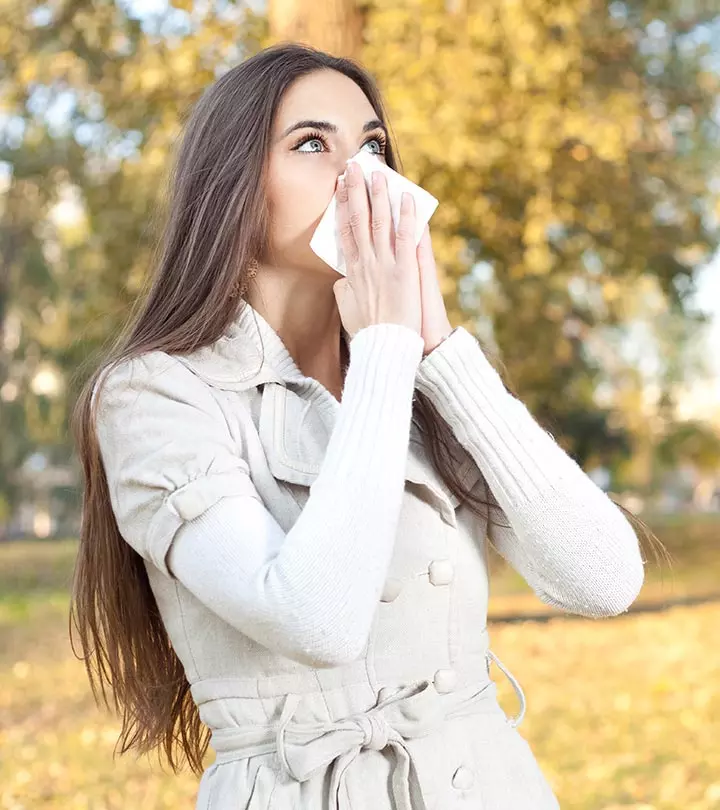



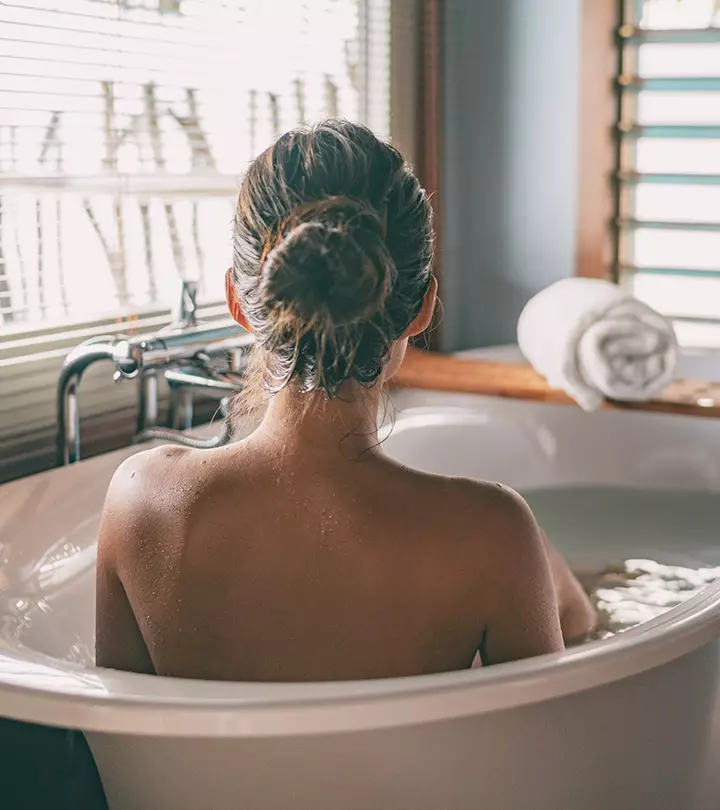





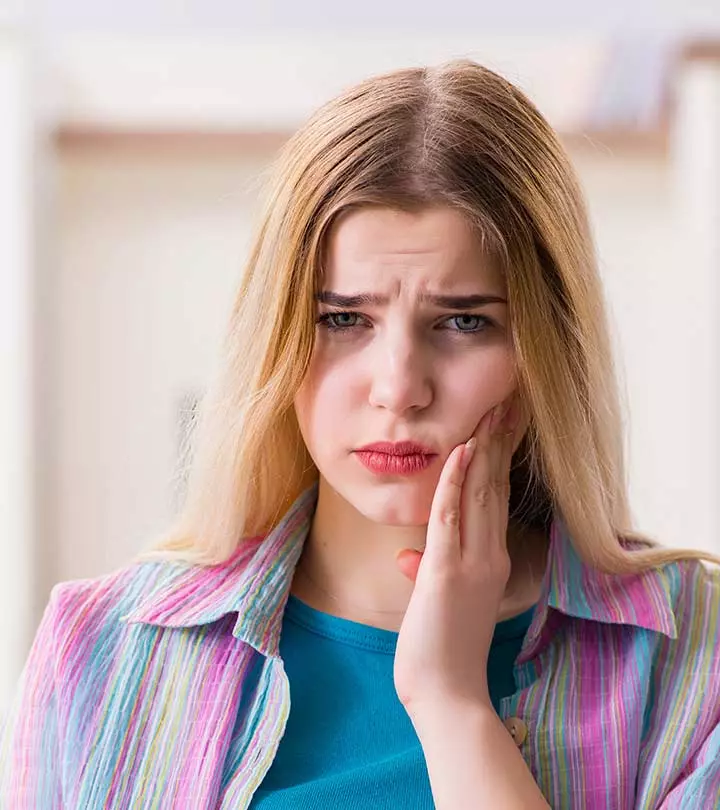
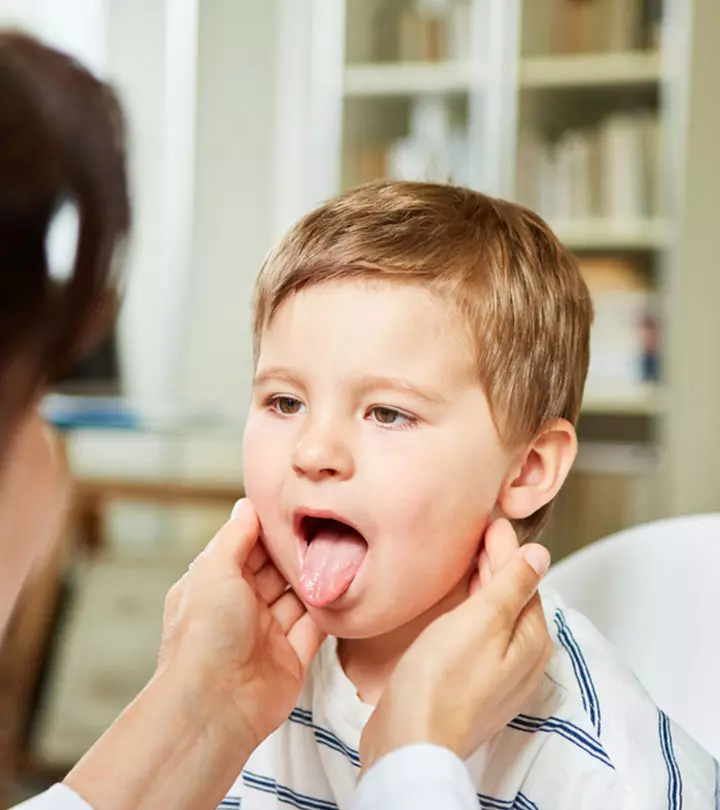
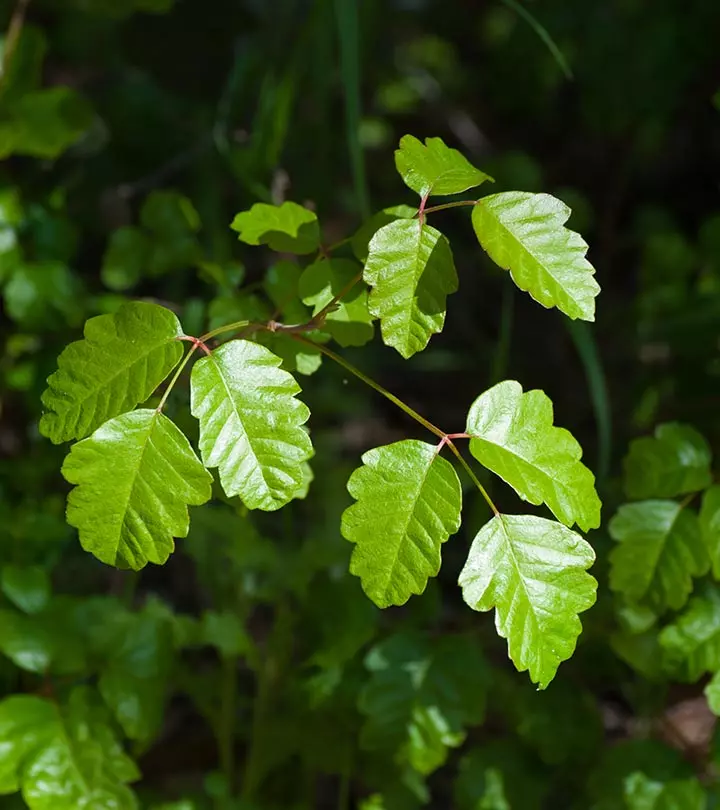



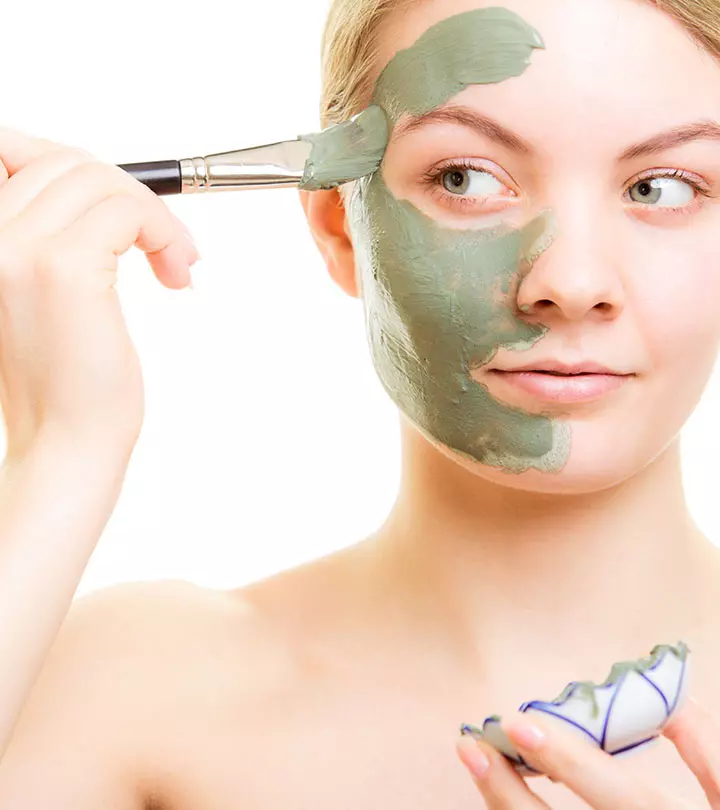

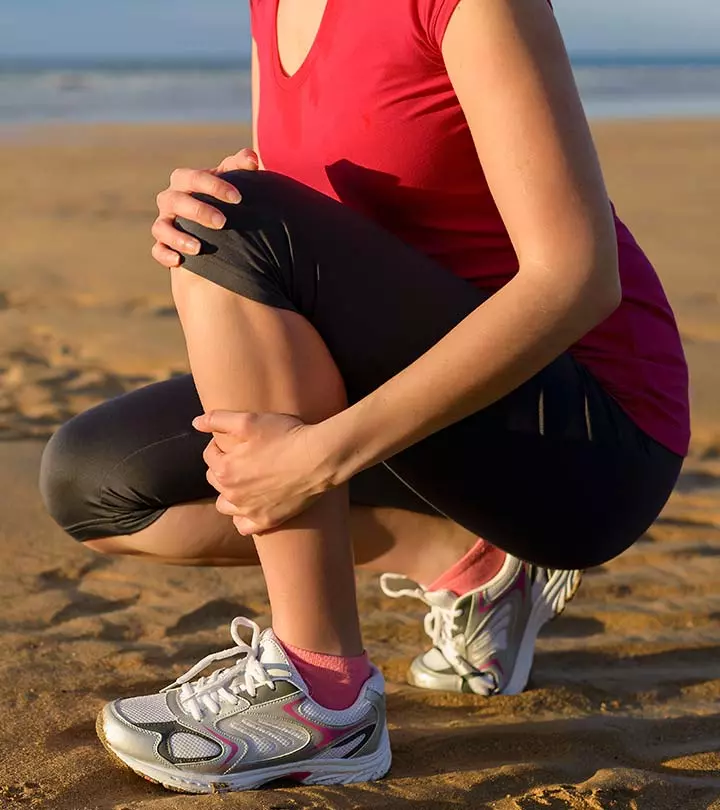


Community Experiences
Join the conversation and become a part of our empowering community! Share your stories, experiences, and insights to connect with other beauty, lifestyle, and health enthusiasts.